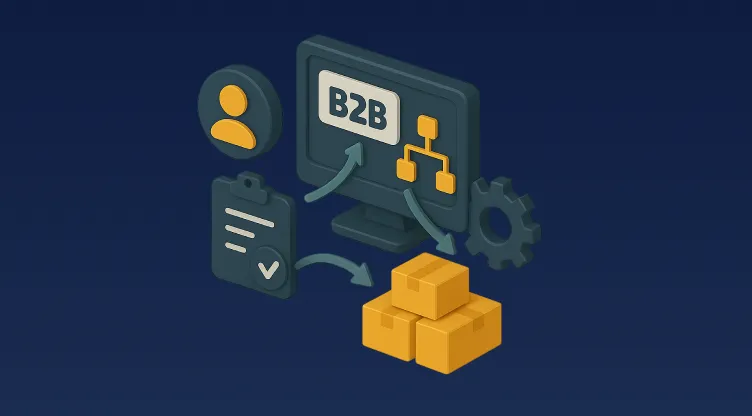Original Guide to Preventing Stockouts and Backorders in MENA with Smart Inventory Control

Table of Contents
🚨 Supply Chain Quick Wins – What You Should Know
- Running out of stock isn’t just a logistics issue—it directly affects revenue and customer loyalty.
- Safety stock helps retailers and distributors bridge delays in supply or unpredicted jumps in demand.
- Reorder mechanisms built into IMS platforms enable restocking well before you run empty.
- Intelligent alert systems notify your team when stock dips or abnormalities arise.
- MENA-based platforms like Omniful enable region-specific strategies such as multi-hub stock control and real-time updates.
Why Stockouts Are a Bigger Problem in MENA’s Modern Retail Landscape
In today's connected retail world, especially across the Middle East and North Africa (MENA), product availability defines business success. Cities like Riyadh, Dubai, and Cairo host shoppers who expect immediate delivery and consistent stock levels—whether through online platforms or in-store purchases.
When businesses fail to meet those expectations because products are unavailable, the consequences can be serious:
- A shopper moves to a competitor with stock ready.
- Delays damage trust in your brand.
- Fulfilment costs rise due to manual workarounds.
What Safety Stock Really Means for Retailers
A Buffer, Not a Backup
Safety stock isn’t leftover inventory. It’s an intentional reserve designed to absorb disruptions—whether those are due to slower deliveries, increased demand, or supplier errors.
Let’s say a skincare product in Abu Dhabi sells out faster than usual due to a viral trend. If the next shipment is two weeks away, your safety stock is what fills the gap and maintains sales momentum.
Key Inputs for Planning Safety Stock
To set up this buffer effectively, consider:
- Sales speed: How quickly each item moves, especially during campaigns or regional holidays.
- Delivery timelines: Lead time can vary drastically, especially if sourcing internationally or across GCC borders.
- Supplier behaviour: Are shipments consistent, or do you face delays?
- Inventory review frequency: Weekly updates allow tighter safety stock buffers; monthly reviews may need more cushioning.
Platforms like Omniful allow regional retailers to define safety stock values at SKU level and assign different values per warehouse or city—a critical need in multi-location supply chains.
Reorder Triggers: Acting Before It’s Too Late
Taking Action at the Right Time
Rather than relying on memory or spreadsheets, reorder triggers automate stock replenishment. These are thresholds set for every item, and when inventory falls below them, the system prompts an order or warning.
This strategy is particularly valuable in MENA’s fast-changing retail scene, where sales spikes can come from cultural events, influencer promotions, or platform-wide campaigns.
Why They Work
Imagine you’re running an electronics store in Kuwait. Your most popular charger drops to 30 units, which historically sell in three days. Your supplier takes five days to deliver. If your reorder point is set at 50 units, the system will warn you before running low—allowing restock without sales interruption.
Reorder triggers work best when dynamically adjusted using recent sales data, upcoming promotional calendars, and delivery performance analytics.
Omniful's system can automate these reorder levels, track changes, and even launch purchase order drafts automatically—cutting out manual delays.
Inventory Alerts: Proactive Not Reactive
Real-Time Signals That Keep You in Control
Alerts act like traffic signals in your warehouse. They help teams respond quickly to situations like:
- Sudden drops in fast-selling products
- Inbound shipments being late
- Slow-moving goods nearing expiry
- Discrepancies during stock audits
Instead of discovering issues during fulfilment—or worse, from customer complaints—alerts shine a light on problems as they form.
How Businesses Use Alerts
A food distributor in Sharjah, for instance, may get a mobile notification if perishable stock drops below threshold in a refrigerated zone. This allows the team to reorder in time or move stock between locations before service levels are compromised.
Omniful's alerting features go beyond simple stock counts—they incorporate expiry timelines, bin-level changes, and daily transaction reports.
Understanding the True Cost of Backorders
What Are Backorders?
Backorders are open commitments to fulfil customer requests when stock isn’t currently available. While some brands use them to hold demand, they often lead to:
- Frustrated buyers cancelling orders
- Increased refund and support requests
- Lost sales opportunities during critical sales periods
Why They Should Be Minimized
In regions like Saudi Arabia or the UAE—where same-day delivery has become standard in some sectors—shoppers have low tolerance for waiting. Businesses relying heavily on backorders tend to lose trust quickly.
How to Reduce Them
- Match demand forecasting to seasonality: Ramadan, Eid, and National Days change shopping volumes dramatically.
- Create multi-point fulfilment models: Stock in more than one city improves availability and lowers shipping costs.
- Introduce auto-restock rules: Set it and forget it—until your system reminds you.
Localising Inventory Management for MENA Supply Chains
Why One Size Doesn’t Fit All
A strategy that works for a store in Muscat might not apply in Casablanca. Regional variables—such as customs clearance timelines, infrastructure differences, or buying behaviours—require flexible systems.
With Omniful, businesses can:
- Adjust safety stock by hub or city
- See real-time updates across all sales channels
- Set different rules for perishable vs. non-perishable goods
- Automate transfer of stock between dark stores, showrooms, and central warehouses
Best Practices for the Region
- Frequent mini-audits: Instead of yearly stocktakes, run regular cycle counts using mobile scanning.
- Integrated returns tracking: Ensure returned items are restocked or disposed of promptly, avoiding ghost stock.
- Sales channel syncing: Keep product availability updated on Noon, Salla, Shopify, and all other active platforms to prevent overselling.
Real Use Case: Omniful Helps Retailers Get Inventory Right
A Clothing Brand in Bahrain
A mid-sized fashion retailer operating in Manama used to miss restock windows during monthly campaigns. Orders often outpaced inventory, resulting in order cancellations.
They implemented Omniful’s inventory engine and configured:
- Daily SMS alerts for top 10 SKUs
- Safety stock limits per season (based on prior year data)
- Reorder triggers based on both velocity and supplier performance
Result?
- Zero stockouts during Q4 promotions
- Delivery accuracy improved by 40%
- Return rate dropped as backorders disappeared
Frequently Asked Questions
Is holding more safety stock always better?
Not always. Too much inventory ties up capital and risks waste. Smart IMS systems help you hold just the right amount based on real usage data.
How do I set reorder triggers for new products?
Use early sales data plus supplier lead time to estimate. Revisit and fine-tune monthly based on updated performance.
Can I run alerts on my mobile?
Yes. Omniful’s mobile features support on-the-go notifications for warehouse teams, store managers, and buyers.
Is this useful for B2B wholesalers too?
Absolutely. Any business with physical inventory—wholesale or retail—benefits from real-time stock visibility and automated workflows.
Conclusion: Don’t Let Inventory Errors Undermine Growth
In the MENA region’s evolving business ecosystem, controlling stock isn’t just about storage—it's about meeting expectations. With tools like safety stock, automated reorder systems, and intelligent alerts, businesses no longer need to be caught off guard.
The best inventory strategies don’t rely on fire drills. They’re built on foresight, automation, and local context.
🔍 Ready to turn your inventory into a strength—not a risk? Request a Demo with Omniful























